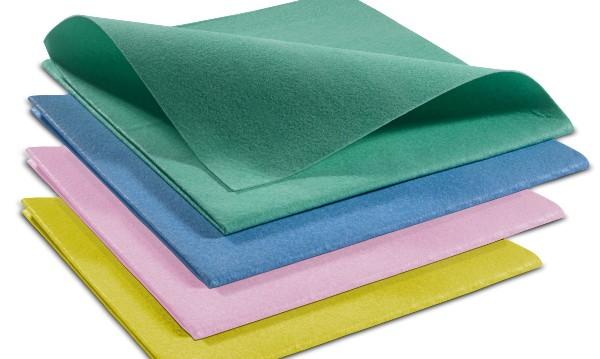Rags for cleaning the floor, windows, dishes
 Cleaning rags are varied and different types are better suited for specific procedures. Using a rag, for example, made of bamboo or cotton, for other purposes, the hostess complicates her life, and also reduces the effect of her efforts.
Cleaning rags are varied and different types are better suited for specific procedures. Using a rag, for example, made of bamboo or cotton, for other purposes, the hostess complicates her life, and also reduces the effect of her efforts.
In order to avoid such oversights, one should understand the material of the rags and their scope.
The content of the article:
- Types of cleaning rags
- Purpose of rags
- Rating of the best rags, TOP-6 manufacturers
Types of cleaning rags – basic materials, pros and cons
The speed and volume of the absorbed liquid, the strength of the fabric, and the efficiency in collecting small polluting elements, such as dust, depend on the material of the rag. You should know the basic types of materials in order to learn how to use them correctly.

There are many options to be found on the market. We offer a list of the most popular ones.
Cotton
These rags are made of absolutely environmentally friendly and natural material. They do not scratch surfaces. They perfectly absorb any liquid.

Cotton rags can be washed by hand or in the washing machine. After cleaning, it can be applied again – the wear of the fabric occurs after 3-4 uses.
Cotton rags are usually large enough. The cost is higher than most plastic rags.
Latex
Excellent for removing stubborn dirt. They do not leave scratches – they are used even when cleaning glass. However, when cleaning windows, they are used only as a first step.

Latex cannot wash off fingerprints.
Latex rags cannot be used dry.
They can be used many times, however, they should not be washed in hot water. They contain viscose, which increases the amount of absorbed water.
Microfiber
One of the most advanced materials. Appeared on the market recently. Allows you to get to microcracks in surfaces, clean them. It absorbs liquids well. Does not leave lint after cleaning.

Such rags are divided into woven and non-woven. Non-woven rags are more expensive, but give a greater effect in all respects.
You can find out which type of product it is by reading the information on the label.
Viscose
Suitable only for wet cleaning – use of viscose cloths in dry form is prohibited. It absorbs liquids best of all its “competitors”. Does not damage the surface.

It can be used only once – with prolonged use, colonies of fungi and bacteria grow on it. Tears easily if you decide to squeeze it out.
Cellulose
The characteristics of cellulose rags are very similar to those of viscose rags. High absorbency, fragility, use only with wet cleaning.

These two types of fabrics are absolutely interchangeable.
More than viscose, suitable for cleaning the kitchen and bathroom.
Bamboo
They serve for a very long time, and for this it is not necessary to follow special care rules. Used for all types of surfaces.
They are considered the most effective, but also the most expensive option. In most cases, they are large enough.

Microcracks in surfaces are not always captured during cleaning.
Bamboo rags are usually used for everyday household stains. They are rarely used to clean the most contaminated areas.
Wet wipes
Very fragile, disposable. Initially wet so you don’t waste time wetting.

The scope of their application is very limited, but they can be indispensable for spot cleaning.
Perfect for cleaning equipment and small decorative items. Almost never used in general cleaning.
Purpose of cleaning rags – what rags will be needed to clean the floor, windows, furniture, etc.
Indoor cleaning rags are used for a variety of purposes. Cleaning of floors, glass, furniture, etc. has its own characteristics.
The cleaning feature should also be taken into account. For general scheduled cleaning, some types of rags are suitable, and for emergency removal of dirt – others.
Floor cleaning
Washing the floor is a two-step process. First – wet cleaning, and then – wiping with a dry cloth. In hot seasons, the second stage is sometimes ignored.
The main goal is to remove dust and dirt from the entire surface, including microcracks. Use a large rag that can cover the entire surface of the mop.
Glass washing
Needs a very delicate cleaning. Many rags can damage the glass and leave scratches. A delicate cloth is used for primary cleaning of dust from glass. To get rid of fingerprints, you should use more effective means.
Washing glass in mirrors is not difficult and does not require particularly large rags. In order to wash the windows, you need a larger rag. This allows glass to be washed on both sides without risking falling out of the window.
Furniture cleaning
Scratching furniture is harder than glass, but regular wet cleaning can damage your furniture. You need to use bulky rags that can be used dry.
Variations are possible depending on the type of furniture. Damp cleaning of cabinets and tables is an acceptable practice. You need to be more careful with sofas, beds and armchairs.
Washing ceramic tiles
There are always a lot of microcracks in ceramic tiles. You need to use only those rags that can reach the most inaccessible places. How to wash and bleach tile joints?
Some rags only “smear” the dirt on the ceramic surface. The wet cleaning method should be used using a cloth with a high absorbency of liquids.
Washing household appliances
Be sure to unplug household appliances from electricity before cleaning. Rinse gently, only touching the body. Small cloths are ideal, and the coverage area can be easily controlled.
Regardless of what type of rag you use, throw it away after cleaning your household appliances. Especially if the cleaning has affected the bathroom. For “dirty” work, it is better not to use bamboo rags and cotton cloth.
Rating of the best cleaning rags, as well as TOP-6 manufacturers
We bring to your attention the TOP-6 of the best cleaning rags. It is impossible to make a holistic rating, since different rags are good in their field of application. We have identified six popular tasks that can be solved with cleaning rags, and named the 2 most advantageous options each.
TOP-6 manufacturers of rags for cleaning and washing surfaces
- Vileda (Germany)
- Freken Bok (Ukraine)
- Smart (Switzerland)
- Bagi (Israel)
- Red Cat (Russia)
- Clear Line (Russia)
The best rags for cleaning the floor
- The best option is viscose… Viscose rags do not leave scratches and are very convenient for wet cleaning. They are most effective if the flooring is linoleum. We recommend buying Vileda rags from Germany: despite the high price, the rag will serve you for a very long time.

- Large bamboo rags are suitable for cleaning the floor. – they are easy to place on the mop. She will not subside, which will greatly facilitate the cleaning process for the housewife.

Rags for cleaning ceramic tiles
- Cellulose rags. Cleaning the kitchen and bathroom shows that cellulose has a number of advantages over viscose. It removes soap deposits better.

- Microfiber or latex rags will help remove stubborn dirt that often accumulates on ceramics.

Rags for washing plumbing
- Microfiber rags will be most effective. They do not leave scratches, which is very undesirable when cleaning equipment. However, they can reach the most difficult places.
 The production of such rags is carried out by the German company Sonax, which has long won a kick in the household goods market. Among other European analogues, the Microfiber System of the Swiss manufacturer Smart can be noted.
The production of such rags is carried out by the German company Sonax, which has long won a kick in the household goods market. Among other European analogues, the Microfiber System of the Swiss manufacturer Smart can be noted. - Wet wipes… Ideal for the second stage of cleaning, when you need to remove the remaining dirt in specific areas.
Glass rags
- Latex best for windows and mirrors. It can be used without fear of leaving damage on such a fragile material.

- Viscose – also a good option for cleaning glass. Especially if you are using a lot of liquid cleaners.

Furniture rags
- TOP for furniture cleaning tops microfiber… These rags are the most effective solution against dust. There are a lot of microcracks in furniture, which microfiber copes with with a bang.

- Bamboo rags also very good at cleaning dust. But it is the accumulation of dust that is the main cause of pollution and damage to furniture. If you use them only for cleaning dust, then such a rag will retain functionality for a long time.

Universal cleaning rags
- The most versatile rag is bamboo rag… It can be used for all types of cleaning. The only drawback is the rather high price. Not all housewives agree to use such a rag on the “dirtiest” types of cleaning.

- Are also universal microfiber non woven rags… Suitable for all types of cleaning.
 It is better not to use it when cleaning glass, although it will not cause harm. It’s just that in certain types of cleaning there are better options than microfiber.
It is better not to use it when cleaning glass, although it will not cause harm. It’s just that in certain types of cleaning there are better options than microfiber.
What to give a friend?
Gift Certificate! You can give it to your loved one or use it yourself.
And we also give away a certificate for 3000 rubles every month. among new email subscribers. Subscribe!
Select a certificate in the store
Visit Bologny for more useful and informative articles!





